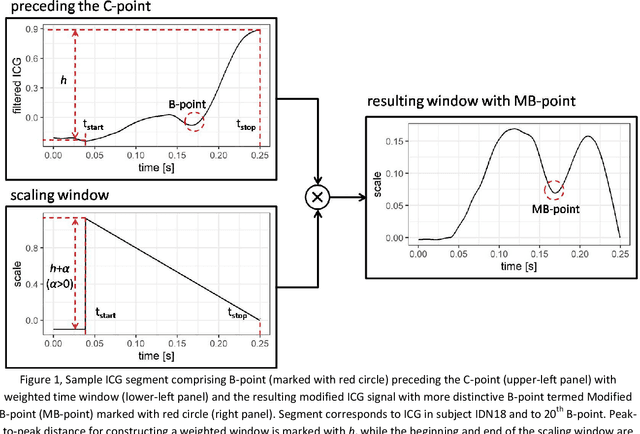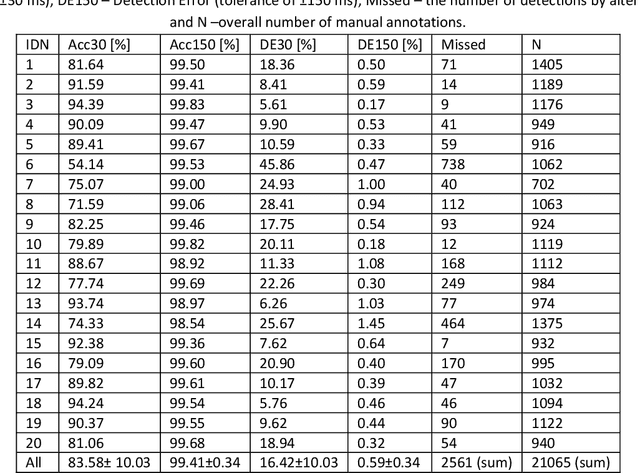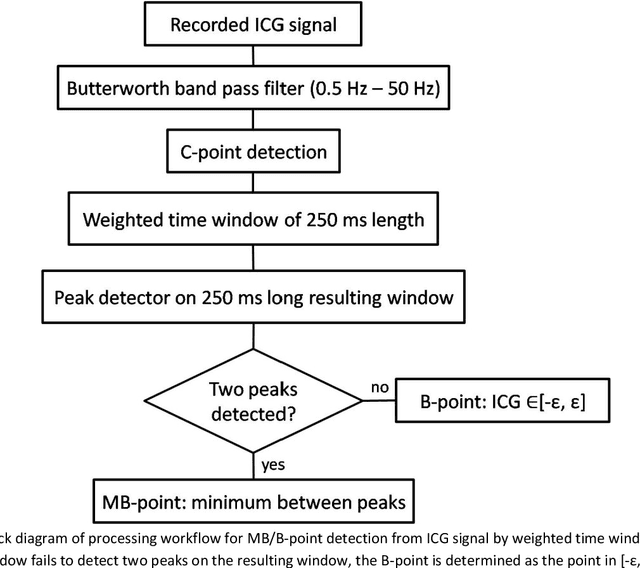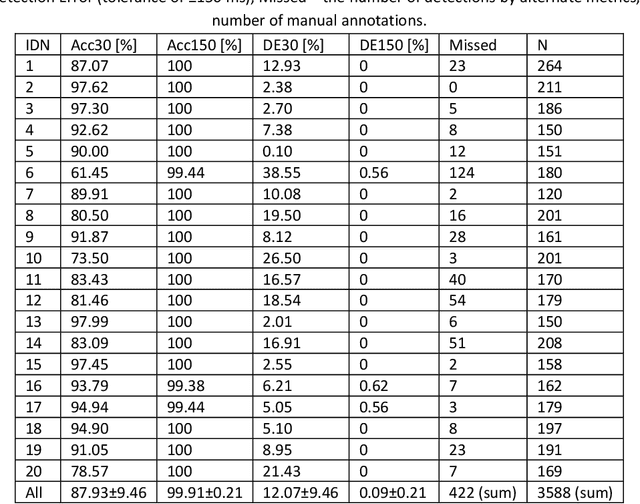Nadica Miljković
Data-driven Method for Generating Synthetic Electrogastrogram Time Series
Mar 04, 2023Abstract:Objective: A new method for generating realistic electrogastrogram (EGG) time series is presented and evaluated. Methods: We used EGG data from an existing open database to set model parameters and Monte Carlo simulation to evaluate a new model based on the hypothesis that EGG dominant frequency should be statistically significantly different between fasting and postprandial states. Additionally, we illustrated method customization for generating artificial EGG alterations caused by the simulator sickness. Results: The user can specify the following input parameters of developed data-driven model: (1) duration of the generated sequence, (2) sampling frequency, (3) recording state (postprandial or fasting state), (3) breathing artifact contamination, (4) a flag whether the output would produce plots, (5) seed for the sake of reproducibility, (6) pauses in the gastric rhythm (arrhythmia occurrence), and (7) overall noise contamination to produce proper variability in EGG signals. The simulated EGG provided expected results of Monte Carlo simulation while features obtained from the synthetic EGG signal resembling simulator sickness occurrence displayed expected trends. Conclusion: The code for generation of synthetic EGG time series is freely available and can be further customized to assess robustness of the signal processing algorithms to noises and especially to movement artifacts, as well as to simulate alterations of gastric electrical activity. Significance: The proposed approach is customized for EGG data synthesis, but it can be further utilized to other biosignals with similar nature such as electroencephalogram.
A New Weighted Time Window-based Method to Detect B-point in ICG
Jul 10, 2022



Abstract:Background and Objectives: A simple, adaptive, and efficient method to detect the beginning of the left ventricular ejection in Impedance Cardiogram (ICG) or the so-called B-point is presented. From implementation perspective this method is designed in time domain and could be exploited for real-time implementation. Methods: The core of the new method is transformation by weighted time window of an ICG segment preceding the maximal ICG peak (the C-point) aiming at the B-point enhancement. The resulting Modified B-point (MB-point) is then easily delineated. To evaluate the proposed workflow for B-point detection based solely on ICG signal, the dataset comprising 20 healthy participants and 21065 B-points are manually annotated and openly shared with the software code. To the best of our knowledge, this is the largest reported and shared ICG dataset for delineation. Detector performance was evaluated on two recorded segments with less and more distinct noises, as well as on an available dataset from the internet comprising ICG recorded in another set of 24 healthy subjects. Results: The results showed that the method was superior when the tolerance for B-point detection was set to +/-150 ms in all cases and for both datasets (>99.4%). Conclusions: In conclusion, proposed approach based on the weighted time windows presents a promising technique for reliable ICG delineation and even for further customization for labeling of other biomedical signals such as electrocardiogram and photopletismogram.
Sensing Time Effectiveness for Fitness to Drive Evaluation in Neurological Patients
May 31, 2022



Abstract:We present a method to automatically calculate sensing time (ST) from the eye tracker data in subjects with neurological impairment using a driving simulator. ST presents the time interval for a person to notice the stimulus from its first occurrence. Precisely, we measured the time since the children started to cross the street until the drivers directed their look to the children. In comparison to the commonly used reaction time, ST does not require additional neuro-muscular responses such as braking and presents unique information on the sensory function. From 108 neurological patients recruited for the study, the analysis of ST was performed in overall 56 patients to assess fit-, unfit-, and conditionally-fit-to-drive patients. The results showed that the proposed method based on the YOLO (You Only Look Once) object detector is efficient for computing STs from the eye tracker data in neurological patients. We obtained discriminative results for fit-to-drive patients by application of Tukey's Honest Significant Difference post hoc test (p < 0.01), while no difference was observed between conditionally-fit and unfit-to-drive groups (p = 0.542). Moreover, we show that time-to-collision (TTC), initial gaze distance (IGD) from pedestrians, and speed at the hazard onset did not influence the result, while the only significant interaction is among fitness, IGD, and TTC on ST. Although the proposed method can be applied to assess fitness to drive, we provide directions for future driving simulation-based evaluation and propose processing workflow to secure reliable ST calculation in other domains such as psychology, neuroscience, marketing, etc.
Effect of the sEMG electrode placement and feature set size on the hand movement recognition
May 05, 2020



Abstract:Recording electrode array may not be exactly repositioned across repeated electromyography measurements resulting in a displacement error when aiming at hand movement classification. The influence of electrode displacement on classification accuracy and its relation to the feature set size is of interest for design of hand movement recognition system. In order to examine if the classifier re-training could reach satisfactory results when electrode array is translated along or rotated around subject's forearm for varying number of features, we recorded surface electromyography signals in 10 healthy volunteers for three types of grasp and six wrist movements. For feature extraction we applied principal component analysis and the feature set size varied from one to 8 principal components. Our results showed that there was no significant difference in classification accuracy when the array electrode was repositioned indicating successful classification re-training and optimal feature set selection. The results also indicate expectedly that the number of principal components plays a key role for acceptable classification accuracy ~90%. Interestingly, we showed that interaction between electrode array position and the feature set size is not statistically significant. This study emphasizes the importance of testing the interaction of factors that influence classification accuracy altogether with their impact independently in order to attain guiding principles for design of hand movement recognition system.
 Add to Chrome
Add to Chrome Add to Firefox
Add to Firefox Add to Edge
Add to Edge